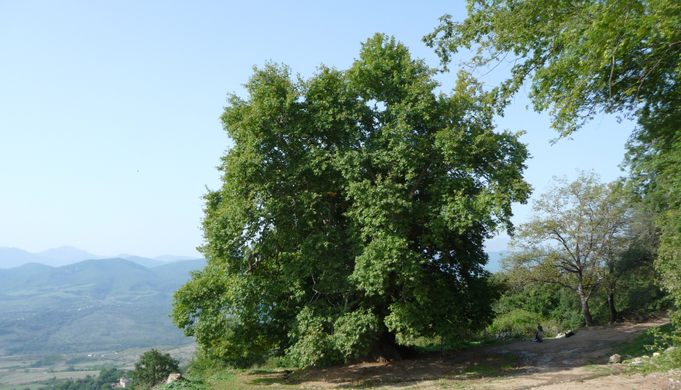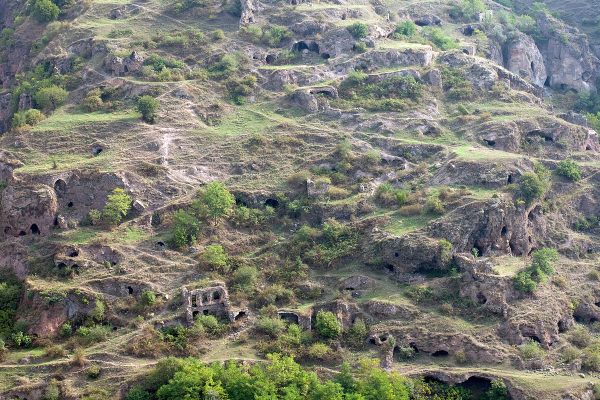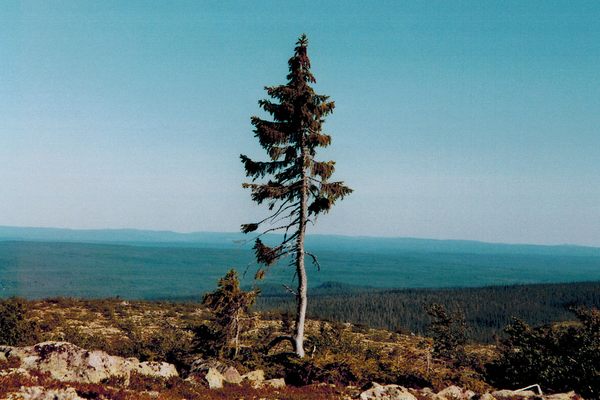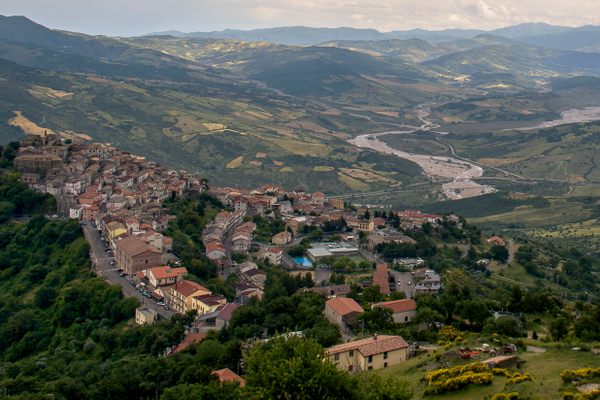Tnjri
Local legend says that whoever burns down this 2,000-year-old tree will only have seven days to live.
Through centuries of war and peace, countless regimes, and an uncertain future, one thing has remained constant in the small, disputed Republic of Artsakh (officially recognized as part of Azerbaijan)—the tree known as Tnjri.
Estimated at over 2,030 years old, the tree has grown massive, with a circumference reaching almost 90 feet and a height of over 170 feet. The hollow trunk is reportedly big enough for more than 100 people to fit inside. Some suggest that Tnjri, which in the Karabakh dialect means plane tree, is the largest plane tree (Platanus orientalis L.) in the world.
According to lore of the local Armenian population, the tree was said to have been visited by many Armenian greats, including the inventor of the Armenian alphabet, Mesrop Mashtots, in the 5th century; Armenia’s first historian, Movses Khorenatsi also in the 5th century; and the musician and poet Sayat-Nova in the 18th century. The size and age of the tree has also garnered the plant spiritual significance among the local people, many of whom see the tree as sacred.
There is even a legend that states that anyone who burns it down will die within seven days. This likely arose as a manner of protecting the ancient arbor since it has survived multiple close calls with arsonists trying to set it ablaze over the years. At one point the problem was so bad a full-time guard had to be posted under the tree.
Despite the many attempts at its life, Tnjri has survived through long eras and regimes. When the country was under Soviet control, Tnjri was said to be the tallest tree in Russia. However through it all Tnjri has remained an important shrine to the local people and a popular site for visitors looking a see a physical symbol of Armenia’s history.
Know Before You Go
By foot from Karmir Shuka (Red Market), visitors can follow the Janapar Trail up the hill to Tnjri. Blue markers (some with a yellow foot) denote the trail. The tree is also accessible by car from the main North-South Highway.



















Follow us on Twitter to get the latest on the world's hidden wonders.
Like us on Facebook to get the latest on the world's hidden wonders.
Follow us on Twitter Like us on Facebook